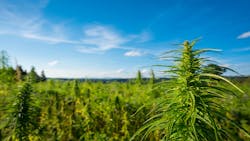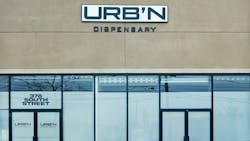Here’s why this eco-friendly building material rocks.
Last month, the International Code Council (ICC) approved hempcrete—a mixture of the woody innards of hemp stalk and lime—as an acceptable material for in-fill construction in US homes.
The change comes thanks to the US Hemp Building Association (USHBA), which filed a proposal for the policy in January and lobbied on its behalf.
While hempcrete has already found a huge audience in Europe, it can now finally help Americans embrace a pragmatic and environmentally-friendly solution to insulate their homes. The new policy applies to one-family homes, two-family homes, and townhouses.
“As an architect, including hemplime into the building code is of paramount importance,” Pennsylvania-based architect Ana Konopitskaya, who helped write the USHBA application, told HempBuild Magazine, who broke the news. “It will allow architects like myself, focused on sustainability, to specify this product in any municipality across the US,” she added.
What is hempcrete?
Before we get ahead of ourselves, let’s take a minute to talk about the material itself.
Hempcrete—also known as hemplime—contains a mixture of lime and hemp stalk hurds. Also known as “shiv,” hurd refers to the woody innards of the hemp stalk. Hurds have a similar consistency to wood chips.
The recipe to make hempcrete is quite simple: Mix four parts hemp stalk hurd, to one part lime binder. Then, add one part water. From there, the hempcrete typically gets formed into bricks.
Why do many people consider it environmentally friendly?
Hempcrete has quickly gained a reputation for being much more environmentally friendly than traditional concrete construction. Here’s why:
- For starters, the bar has been set really, really dang low: Manufacturing traditional concrete accounts for 8% of all carbon emissions worldwide.
- Hempcrete qualifies as carbon-negative, since the hemp plant absorbs more carbon as it grows than the hempcrete processing emits.
- Hempcrete operates as an effective thermal insulator, thus saving us on heating and cooling bills.
- Furthermore, hemp grows quickly, requires less space than trees to grow, and stores twice as much carbon as most trees. As such, some experts argue that hemp could hold the keyto reversing much of the damage done by global deforestation.
Hempcrete offers a sunny spot in the larger conversation of cannabis’ carbon footprint: Indoor grow operations require huge amounts of energy, especially to power sodium lights and HVAC demands.
Shop highly rated dispensaries near you
Showing you dispensaries nearWhat other benefits does hempcrete offer?
Hempcrete’s benefits extend beyond its environmental appeal.
As Leafly pointed out way back in 2015, it’s “toxin-free, airtight yet breathable, unaffected by mold and pests, and practically fireproof.”
Lastly, hempcrete facilitates humidity control: It absorbs, and releases, moisture in the air.
What’s next for hempcrete?
The new residential hempcrete policy will go into effect starting in 2023.
Proponents may next set their sights on approving hempcrete for larger residential buildings and commercial buildings. That decision would be dictated by the separate International Building Code (IBC). Submissions to modify the IBC can be made every three years, and the hempcrete industry will next have an opportunity to propose a change to that code in 2025.





